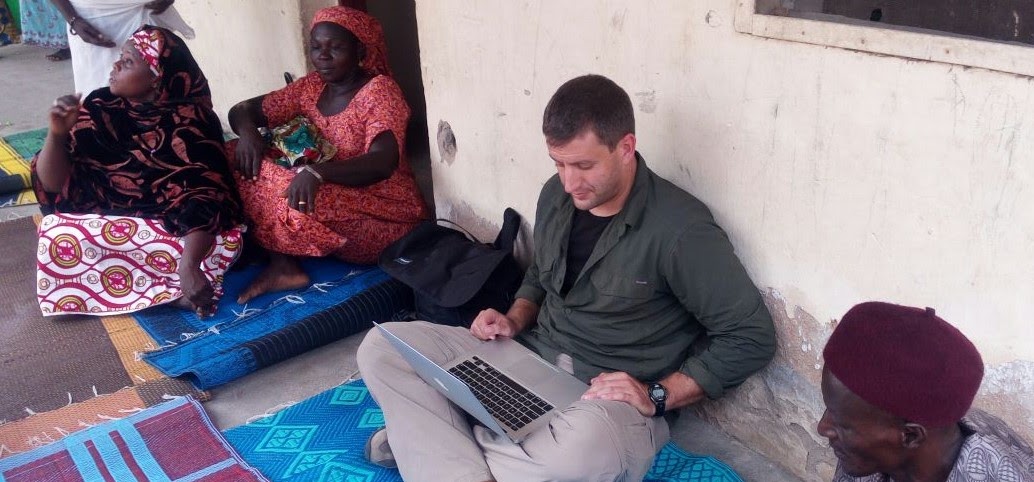
Tech Spotlight Series: FireWatch Solutions on building affordable, secure communications networks for global NGOs
The Tech Spotlight Series is an interview series where we chat with experts in the technology sector about the latest in off-grid communications.
In many of the world’s developing nations, there is a vast ecosystem of non-governmental organizations (NGO) working feverishly to help improve the quality of life. Operating in these places can be dangerous, as access to secure communications can be limited or inconsistent.
After a career in the U.S. Marine Corps, Brian von Kraus began advising NGOs across the globe on security. Working in remote locations, where infrastructure, stability, communications, and security are often lacking, he is tasked with creating plans for navigating ever-changing environments safely. As the founder of FireWatch Solutions, expecting and planning for secure communications ubiquity is key for his nonprofit clients.
According to Brian, redundant levels of technology help to ensure that the security planning performed by FireWatch Solutions is successful regardless of the location. Recently, The Last Mile sat down with von Kraus to better understand the security needs of international nonprofits and how mesh networking communications can round out the mix of technologies that protect staff doing humanitarian work in remote, and often challenging locations.
Here is what he had to say:
The Last Mile: To help us understand the work of FireWatch Solutions, can you tell us why you founded the company?
Brian von Kraus: In some of my early post-military work, I worked for a small international NGO that was found by a friend. While working with them, I saw a major gap in security protection in the NGO sector as a whole. Many of their employees were exposed to a lot of risk that they didn’t need to be. With that in mind, I started FireWatch Solutions to help protect NGOs and their employees.
The Last Mile: What does your daily work on behalf of NGOs look like?
Brian von Kraus: Most of my work is remote. I’m a remote security manager for several NGOs. I help them with security quality development, outline training plans for employees, and travel briefings. The more exciting portion of the work I do, and the minority of the work, is the overseas in-person advisory services where I go overseas to do risk assessment and project setup.
For example, I helped one NGO by doing scouting trips to set up a new project in a conflict zone. We scouted places like Mogadishu, Somalia, Eastern Congo, northeast Nigeria, before settling on northeast Nigeria in close proximity to Boko Haram. I supported another NGO by scouting a location in Niger where we were able to protect their activities near the Sahara Desert. The overseas work is what I find most compelling.
The Last Mile: How do you and your clients stay connected in these remote locations?
Brian von Kraus: For short-term trips, there are two modes of primary communications: local cell phone networks and backup satellite communications in case the mobile network is down. This often happens in remote areas. If the project is long-term, we can add more layers of communications — VHF radios, and others.
In those remote rural areas, where many NGOs have their field teams working, there are gaps where I see the need for mesh networking devices like goTenna Pro to beef up our Primary, Alternate, Contingency, and Emergency (PACE) plans and make them more robust. PACE Plans are part of a military methodology that calls for having multiple, redundant communications — if one fails, there are backup communications.
The Last Mile: What challenges need to be overcome to ensure continued security and communications?
Brian von Kraus: Often, our clients choose to operate out of a safe hub such as a large population center. However, sometimes our clients choose to operate away from these hubs where the need for their services is often greater. For example, one of our clients chose to operate closer to a conflict zone with the intent to set up a long-term base and stabilize communities through agricultural development.
In these more remote locations, mobile data infrastructure is inconsistent due to the long distances. It requires too much investment to have cell towers out that far. Also, there might be times where extremist groups actively destroy towers. In some countries, governments can also shut down the networks during protests and other times of civil unrest — which are times when the NGOs need communications the most. Our NGO workers are impacted by these disruptions.
The Last Mile: What are some of the risks that NGOs may face when they’re operating in these remote locations?
Brian von Kraus: There is a whole range of risks…
…to read the full article, click here. Link will take you to the goTenna blog page.
-FWS



